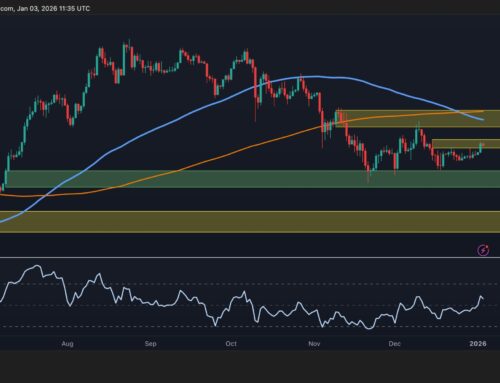What Investors Should Know About the Impact of Tariffs on Shopify’s Business @themotleyfoo
April 19, 2025
The road forward for Shopify will likely be different today than a year ago.
When President Trump was reelected, investors knew it wouldn’t be business as usual. But even then, most did not expect the new president to introduce a tariff policy targeting almost every country, friends and foes alike.
While President Trump has temporarily paused his proposed policy in order to negotiate with the countries involved, there’s still a fixed 10% minimum tariff on all countries except for China at 145%. Investors are trying to understand how the tariff could impact their investments.
This article will explain the new tariff policy’s impact on Shopify‘s (SHOP -0.31%) prospects.

Image source: Getty Images.
Tariffs will massively hit Shopify’s merchants
If implemented, the new tariff policy will directly and severely harm merchants in the short and long term.
The most obvious impact will be an increase in the cost of goods sold for merchants, many of whom are resellers or drop-shippers. For example, a $10 product imported from overseas now faces a minimum of 10%, increasing its base cost to $11. This increase in cost forces merchants to make a tough decision — absorb the added expense and take a hit to profits or pass the cost on to customers, risking lower sales due to higher prices.
But that’s just the best-case scenario. Merchants who rely on Chinese supplies will see their cost increase to $24.5 (thanks to the 145% tariff on Chinese goods), which could render their business model completely unworkable. These merchants must seek new suppliers quickly or face losing sales altogether. If they can’t find an alternative at acceptable prices, they will have no choice but to shut down their online businesses.
Beyond pricing pressure, the new tariffs introduce added complexity at checkout. Merchants must now factor in duties and taxes during the shopping experience to keep customers informed about the latest pricing. Failure to promptly give the correct information could lead to customer complaints or lower profits.
Also, merchants will have difficulties planning for the next few quarters, given the uncertainties around the negotiation between the countries involved. Placing an order for shipment today could result in a much higher total cost when the products arrive in the U.S. — by then, the reciprocal tariff rate could have been reinstated. Merchants will have no choice but to take a wait-and-see approach, leading to a weaker sale volume in the near term.
Even if merchants survive in the short term, they will inevitably face a much higher cost structure in the future, even if they import from countries with low tariffs or source locally. After all, tariffs will inevitably increase the cost of production of goods globally. And consumers paying more for almost everything will likely have less disposable income to spend, impacting merchants’ long-term sales prospects.
In short, there will be massive pain down the road for Shopify’s merchants.
What does it mean for Shopify’s business?
As an e-commerce software-as-a-service (SaaS) provider, Shopify will not face a direct financial impact unless the tariff war on physical goods escalates to include digital products.
Besides, some part of Shopify’s revenue is recurring (mainly from monthly subscription fees), as long as the merchants remain users of its software and tools. For the year ending Dec. 31, 2024, the SaaS provider has $178 million monthly recurring revenue, or $2.1 billion annually. This part of Shopify’s revenue will be more resilient to the tariff war.
However, the bulk of Shopify’s remaining revenue ($8.9 billion less $2.1 billion) depends on the company’s gross merchandise value (GMV), including payment, transaction, shipping, etc. Since the GMV drives this revenue, any decline in merchant sales affects Shopify’s take rate. For example, since tariffs increase product costs, merchants will have to raise prices, which could reduce sales volume. Lower sales volume will mean lower payment fees, transaction value, and more.
And that’s the short term. If the tariff war escalates, it will have a long-term impact on Shopify’s ability to grow its business in North America and the rest of the world. After all, tariffs are a tax on trade, so a global tariff war will likely impact international trade, a key ingredient for Shopify’s long-term success.
On a slightly positive note, the increase in complexity in the trade environment could open new opportunities for the company to offer new tools and technologies to overcome the increasingly tricky trade environment. For instance, it could offer new AI-driven tools to help merchants with sourcing, pricing, tax management, and other tasks.
In short, the tariff will likely negatively impact Shopify, potentially lowering revenue in the short term and slowing growth in the longer term.
What it means for investors?
Tariffs don’t directly tax Shopify but disrupt the merchants that drive its growth.
Expect pressure on revenue and GMV in the near term. In the long term, Shopify’s global vision may face structural challenges if trade barriers persist. Investors should watch closely for signs of merchant churn, GMV trends, and the company’s ability to monetize new tools that help merchants navigate this new era of global commerce.
While Shopify can still grow in the long term, the path forward has become more complicated.
Search
RECENT PRESS RELEASES
Related Post



